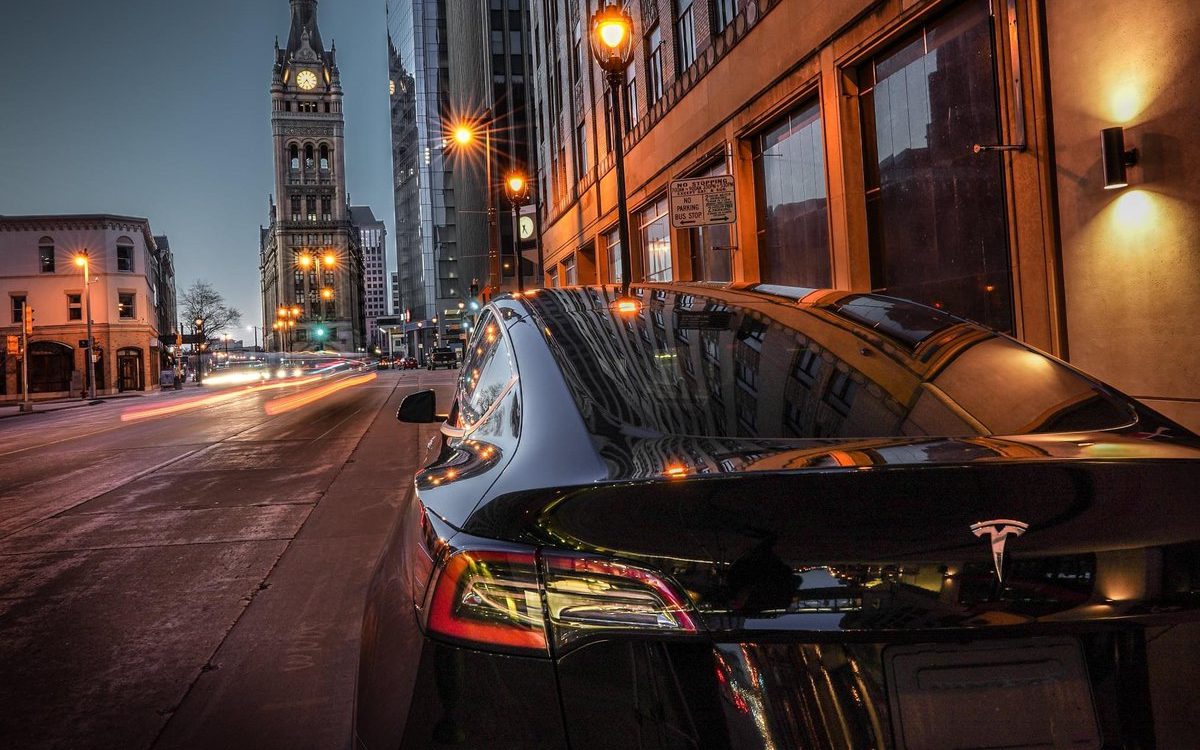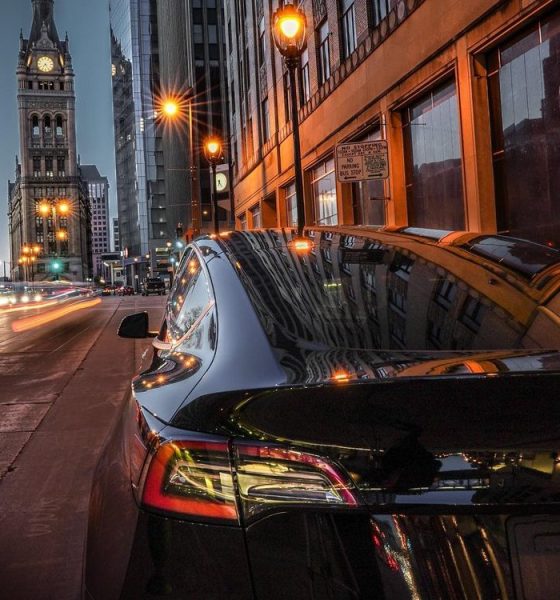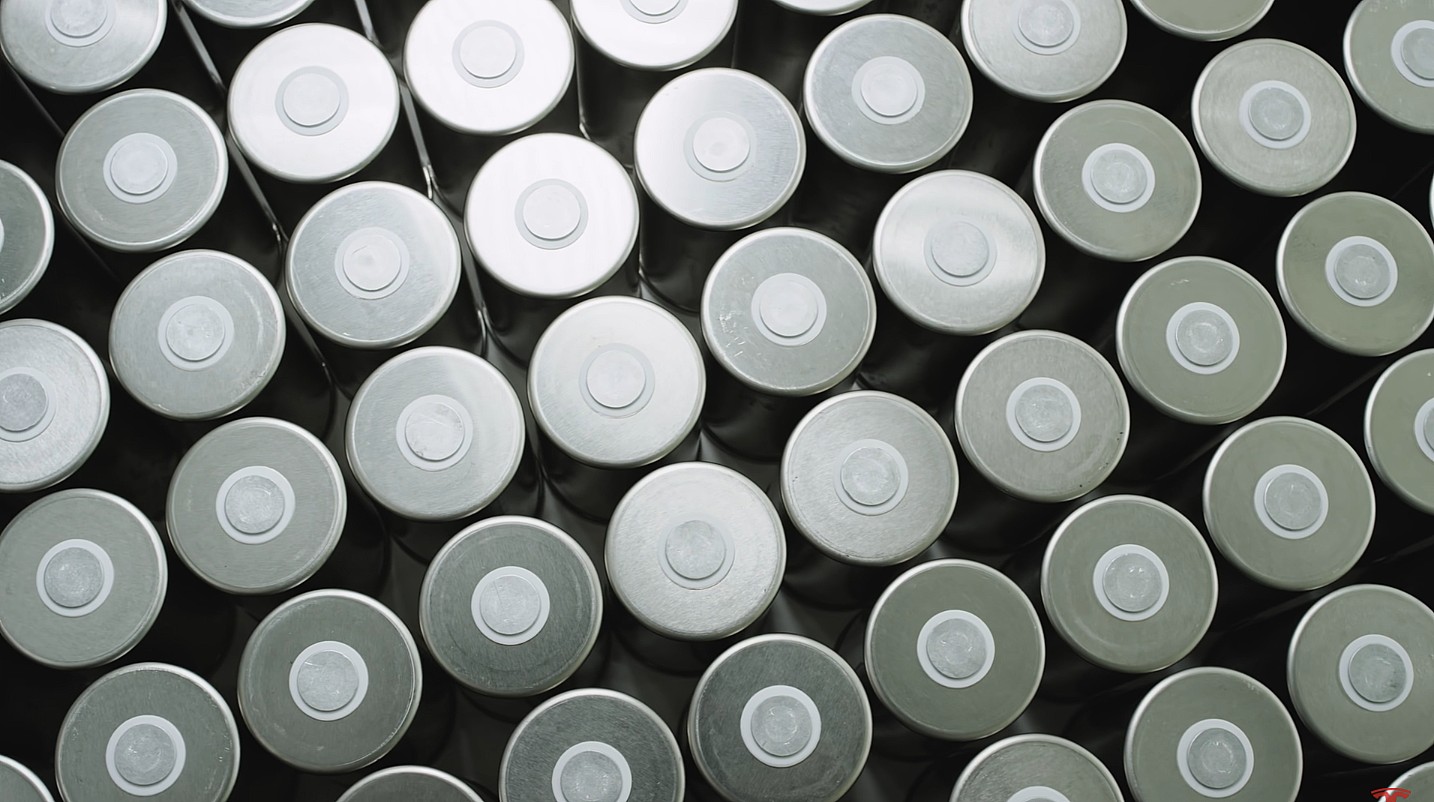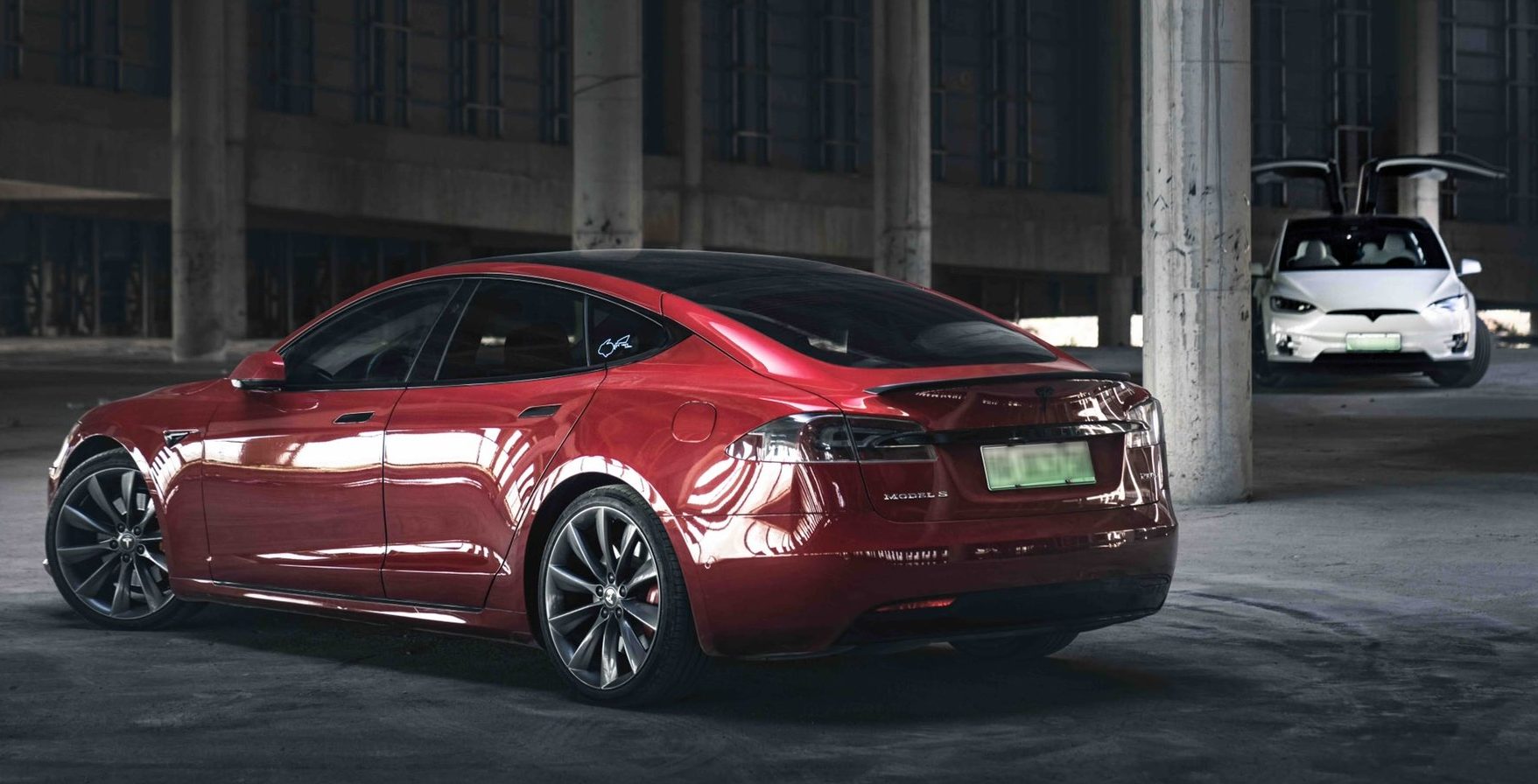

News
Tesla is bringing a machine gun to a knife fight using an ‘AK-47 disguised as a butter knife’
Just recently, Tesla received what could very well be one of its most bullish takes from Wall Street to date, with Canaccord Genuity analyst Jed Dorsheimer acknowledging the potential of the company’s battery business, among other things. During a segment at CNBC’s The Squawk, Dorsheimer noted that Tesla’s primary edge lies in the fact that it simply tackles problems in a way that is fundamentally different from the norm.
And this, according to the analyst, is a crucial advantage—one that could help the EV maker keep its lead in the electric car sector. “Tesla is bringing a machine gun to a knife fight,” Dorsheimer noted.

In a lot of ways, Dorsheimer’s statements ring true. CEO Elon Musk has noted that Tesla should be seen as a chain of about a dozen startups that are each working towards a specific goal. As Musk said, many of the “startups” under Tesla’s umbrella actually have little to no correlation with traditional automotive companies. These include the company’s energy business, which the CEO predicts would comprise a large portion of Tesla in the future.
Despite this, few have looked at Tesla with such a lens. A look at the coverage of Tesla in the mainstream media over the years would show that numerous traditional auto analysts have been wrong about the stock, and even big bulls like Cathie Wood of ARK Invest do not typically cover Tesla’s potential in segments such as battery storage and residential solar. And this, at least for many of Tesla’s critics, has proven to be a costly misstep, as evidenced by TSLA shorts’ $38 billion loss last year.
A group that may very well have acknowledged Tesla’s bigger picture could be retail investors, many of whom are not investing experts. Instead, they are category experts, mastering the unique niche that Tesla was carving for itself. Partly thanks to the emergence of such a group, Tesla’s mid-2019 to 2020 stock performance represented one of the largest transfers of wealth from Wall Street to Main Street investors to date.
What is rather remarkable is that Tesla’s potential is hiding in plain sight. Its electric car business may not produce vehicles at the same volume as Toyota for now, but its numbers are growing massively every year. It only has a couple of functioning car factories today, but both are pushing out vehicles with frightening efficiency. Tesla’s battery storage and solar business may be easy to overlook as well, but its potential is vast as it exists in a sector that’s ripe for disruption.

Inasmuch as all the pieces of the Tesla puzzle are visible, however, it is very easy for someone with a narrow-minded lens—perhaps one focused on month-over-month vehicle deliveries in specific territories—to miss the forest for the trees. And in a way, this is partly due to Tesla’s strategy itself, which tends to keep things understated, despite Elon Musk’s Twitter habits.
From its vehicles to its battery storage systems, Tesla’s entire lineup is designed with simplicity in mind. This was something that Top Gear presenter Chris Harris mentioned back in 2019 when he went behind the wheel of the Model 3 Performance. Harris sharply criticized the Model 3 for its unassuming look, but he was blown away by its performance, which included the vehicle walking all over the best of ICE on the track. Summing up his thoughts, Harris noted that the Model 3 was an “AK-47 disguised as a butter knife.”
This still pretty much applies to Tesla’s current lineup of products. From the Semi to Full Self-Driving to Autobidder, most of Tesla’s creations are designed to usher in a paradigm shift in their respective segments. They just typically come in packages that are easily judged and just as easily miscalculated. Fortunately, and considering the growing community of people well-versed in Tesla’s efforts, the company’s efforts will likely not remain unacknowledged. After all, if Canaccord Genuity analyst Jed Dorsheimer’s recent statements are any indication, it appears that even Wall Street is starting to appreciate the forest a little bit more.
Don’t hesitate to contact us for news tips. Just send a message to tips@teslarati.com to give us a heads up.

News
Tesla FSD fleet is nearing 7 billion total miles, including 2.5 billion city miles
As can be seen on Tesla’s official FSD webpage, vehicles equipped with the system have now navigated over 6.99 billion miles.

Tesla’s Full Self-Driving (Supervised) fleet is closing in on almost 7 billion total miles driven, as per data posted by the company on its official FSD webpage.
These figures hint at the massive scale of data fueling Tesla’s rapid FSD improvements, which have been quite notable as of late.
FSD mileage milestones
As can be seen on Tesla’s official FSD webpage, vehicles equipped with the system have now navigated over 6.99 billion miles. Tesla owner and avid FSD tester Whole Mars Catalog also shared a screenshot indicating that from the nearly 7 billion miles traveled by the FSD fleet, more than 2.5 billion miles were driven inside cities.
City miles are particularly valuable for complex urban scenarios like unprotected turns, pedestrian interactions, and traffic lights. This is also the difference-maker for FSD, as only complex solutions, such as Waymo’s self-driving taxis, operate similarly on inner-city streets. And even then, incidents such as the San Francisco blackouts have proven challenging for sensor-rich vehicles like Waymos.
Tesla’s data edge
Tesla has a number of advantages in the autonomous vehicle sector, one of which is the size of its fleet and the number of vehicles training FSD on real-world roads. Tesla’s nearly 7 billion FSD miles then allow the company to roll out updates that make its vehicles behave like they are being driven by experienced drivers, even if they are operating on their own.
So notable are Tesla’s improvements to FSD that NVIDIA Director of Robotics Jim Fan, after experiencing FSD v14, noted that the system is the first AI that passes what he described as a “Physical Turing Test.”
“Despite knowing exactly how robot learning works, I still find it magical watching the steering wheel turn by itself. First it feels surreal, next it becomes routine. Then, like the smartphone, taking it away actively hurts. This is how humanity gets rewired and glued to god-like technologies,” Fan wrote in a post on X.
News
Tesla starts showing how FSD will change lives in Europe
Local officials tested the system on narrow country roads and were impressed by FSD’s smooth, human-like driving, with some calling the service a game-changer for everyday life in areas that are far from urban centers.

Tesla has launched Europe’s first public shuttle service using Full Self-Driving (Supervised) in the rural Eifelkreis Bitburg-Prüm region of Germany, demonstrating how the technology can restore independence and mobility for people who struggle with limited transport options.
Local officials tested the system on narrow country roads and were impressed by FSD’s smooth, human-like driving, with some calling the service a game-changer for everyday life in areas that are far from urban centers.
Officials see real impact on rural residents
Arzfeld Mayor Johannes Kuhl and District Administrator Andreas Kruppert personally tested the Tesla shuttle service. This allowed them to see just how well FSD navigated winding lanes and rural roads confidently. Kruppert said, “Autonomous driving sounds like science fiction to many, but we simply see here that it works totally well in rural regions too.” Kuhl, for his part, also noted that FSD “feels like a very experienced driver.”
The pilot complements the area’s “Citizen Bus” program, which provides on-demand rides for elderly residents who can no longer drive themselves. Tesla Europe shared a video of a demonstration of the service, highlighting how FSD gives people their freedom back, even in places where public transport is not as prevalent.
What the Ministry for Economic Affairs and Transport says
Rhineland-Palatinate’s Minister Daniela Schmitt supported the project, praising the collaboration that made this “first of its kind in Europe” possible. As per the ministry, the rural rollout for the service shows FSD’s potential beyond major cities, and it delivers tangible benefits like grocery runs, doctor visits, and social connections for isolated residents.
“Reliable and flexible mobility is especially vital in rural areas. With the launch of a shuttle service using self-driving vehicles (FSD supervised) by Tesla in the Eifelkreis Bitburg-Prüm, an innovative pilot project is now getting underway that complements local community bus services. It is the first project of its kind in Europe.
“The result is a real gain for rural mobility: greater accessibility, more flexibility and tangible benefits for everyday life. A strong signal for innovation, cooperation and future-oriented mobility beyond urban centers,” the ministry wrote in a LinkedIn post.
News
Tesla China quietly posts Robotaxi-related job listing
Tesla China is currently seeking a Low Voltage Electrical Engineer to work on circuit board design for the company’s autonomous vehicles.

Tesla has posted a new job listing in Shanghai explicitly tied to its Robotaxi program, fueling speculation that the company is preparing to launch its dedicated autonomous ride-hailing service in China.
As noted in the listing, Tesla China is currently seeking a Low Voltage Electrical Engineer to work on circuit board design for the company’s autonomous vehicles.
Robotaxi-specific role
The listing, which was shared on social media platform X by industry watcher @tslaming, suggested that Tesla China is looking to fill the role urgently. The job listing itself specifically mentions that the person hired for the role will be working on the Low Voltage Hardware team, which would design the circuit boards that would serve as the nervous system of the Robotaxi.
Key tasks for the role, as indicated in the job listing, include collaboration with PCB layout, firmware, mechanical, program management, and validation teams, among other responsibilities. The role is based in Shanghai.
China Robotaxi launch
China represents a massive potential market for robotaxis, with its dense urban centers and supportive policies in select cities. Tesla has limited permission to roll out FSD in the country, though despite this, its vehicles have been hailed as among the best in the market when it comes to autonomous features. So far, at least, it appears that China supports Tesla’s FSD and Robotaxi rollout.
This was hinted at in November, when Tesla brought the Cybercab to the 8th China International Import Expo (CIIE) in Shanghai, marking the first time that the autonomous two-seater was brought to the Asia-Pacific region. The vehicle, despite not having a release date in China, received a significant amount of interest among the event’s attendees.








